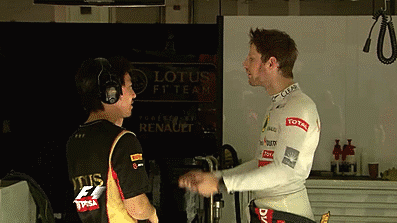Very interesting read Betta. I was on the verge of purchasing triples a few years ago, and then this little device called the Oculus Rift was announced. I immediately put my monitors on hold and began waiting for VR. I kinda regret forgoing those monitors, as I didn't appreciate just quite how long Oculus development would take.
The button issue you mentioned is something I certainly worry about. The competitiveness of iRacing pushed me towards button boxes and losing easy access to all those wonderful dials will severely impact me in endurance races.
Hmm, triple of VR, triples or VR, triples or VR, I still can't decide.
What changes do you think could be made to the Oculus to make you feel more competitive?
Difficult to know what has the most impact, but I'll expand on the three issues I mentioned:
Comfort - it's not so much the physical comfort of wearing the device (although it is far from ideal), but a combination of many factors that add up to a lack of confidence while driving. The FOV and latency problems add to this, but it's also about the nature of a technology that shuts you off from the real world, highlighting any mismatch of the avatar and your real body. Being unable to see my hands operating the wheel correctly is confusing, and even though I can't usually see my feet while driving a real car, I still have a subconscious awareness of where they are, and that awareness can be thrown off in VR. There have been more than a few occasions where I've messed up a heel-and-toe downshift because I was momentarily confused about my feet position. iRacing in particular has poor avatar animations, so I have little choice but to drive with an invisible body, which both helps and hinders this mismatch issue (and sadly significantly reduces immersion).
Using triples, I'm more aware of my real body position, giving me more confidence in applying inputs, even if I'm in an incorrect driving position for the type of car I'm using. In other words, a mismatched driving position on triples doesn't bother me half as much as it does in VR. Solving this kind of 'body presence' issue isn't entirely down to VR hardware development. If hand tracking could be seamlessly integrated that would help, but in the meantime iRacing should have much better animation, and ideally you'd have a rig that could physically adjust to every possible driving position.
FOV - it's too low, horizontally. The Rift is estimated at somewhere just below 100 degrees horizontal FOV, the Vive somewhere just above. Both are nowhere near the >180 degree FOV humans have when looking straight ahead, meaning that peripheral vision feels very restricted, which contributes to the lack of confidence. My triple screen setup gives me a >150 degree FOV, which is much more comfortable in terms of awareness towards the sides of the car. Being able to turn your head in VR compensates for this, but it isn't a good substitute in many racing scenarios. Headlook is only useful if you already know when to turn, such as if you've anticipated something entering your peripheral vision, rather than the other way around, i.e. seeing movement out of the corner of your eye and then reacting to it. More FOV is much more useful for racing than being able to turn your head, imo.
Latency - VR and low latency go hand in hand, so input lag is certainly not bad, but it's there. I believe the issue is related to VR headsets using v-sync, with some of the latency mitigation achieved with timewarp. Timewarp takes new position data from the tracking system at the last possible moment and adjusts the rendered frame appropriately, to make it feel more responsive in terms of headlook. But the other inputs, e.g. steering and pedal inputs, don't benefit from timewarp. So while the headlook has near imperceptible latency, there is a more noticeable amount on car controls, and it feels like it's slightly less responsive than when I use my monitors with v-sync off. This is probably a matter of just a few milliseconds, but it is enough to make me feel less connected to the car. I also believe the lag is made more apparent/distracting by the fact that I can't see my real wheel and hands, and instead I'm having to use the virtual wheel as a reference. On triples, I disable the virtual wheel, so I only see my real wheel in front of me, making any latency easier to ignore (it appears to add to the inertia of the car rather than being obvious lag).
So for me, it is a combination of these things, and several other minor points that I won't bore you with, that results in a small loss in confidence and speed. I must stress that I'm being hyper-critical here, and others may not be troubled by any of this. Indeed my team mate on iRacing, who is near alien quick, believes he has not lost any pace on the Rift compared to his triples.







